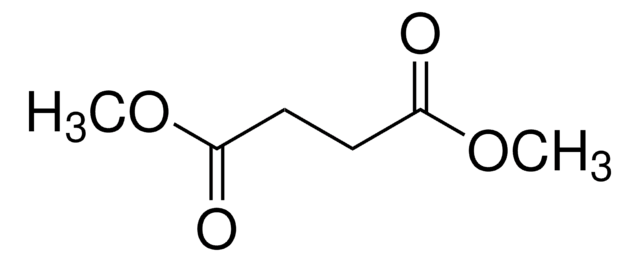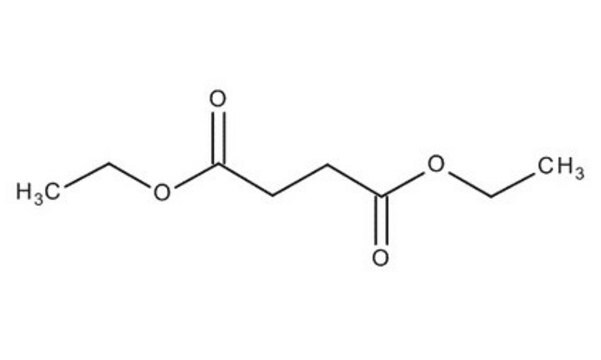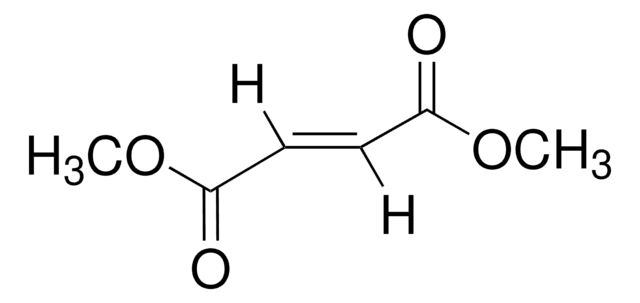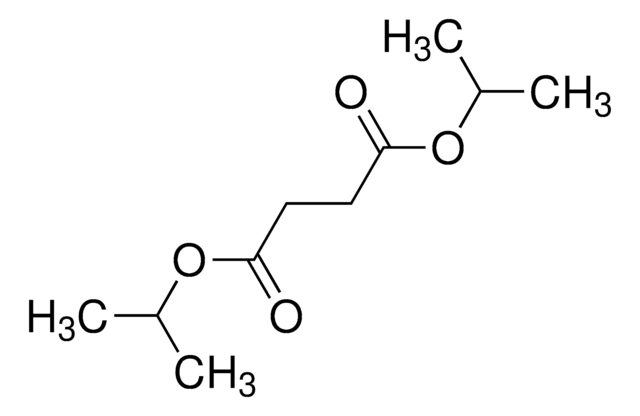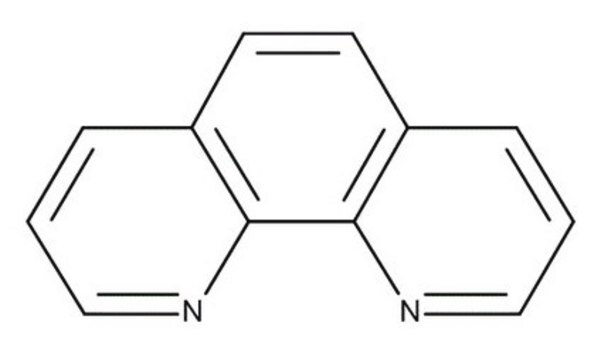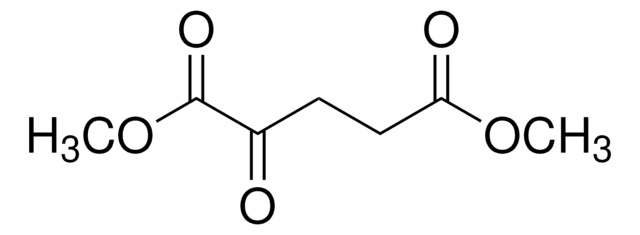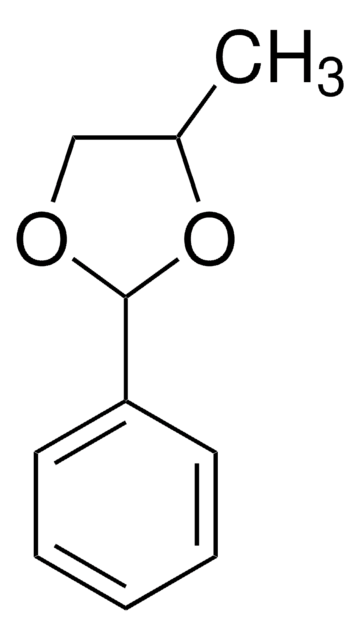W237701
Diethyl succinate
≥99%, FCC, FG
Sinonimo/i:
Diethyl butanedioate
About This Item
Fragrance grade
Halal
Kosher
meets purity specifications of JECFA
Prodotti consigliati
Origine biologica
synthetic
Livello qualitativo
Grado
FG
Fragrance grade
Halal
Kosher
agenzia
follows IFRA guidelines
meets purity specifications of JECFA
Conformità normativa
EU Regulation 1223/2009
EU Regulation 1334/2008 & 178/2002
FCC
FDA 21 CFR 117
FDA 21 CFR 172.515
Densità del vapore
6 (vs air)
Saggio
≥99%
Indice di rifrazione
n20/D 1.42 (lit.)
P. ebollizione
218 °C (lit.)
Punto di fusione
−20 °C (lit.)
Densità
1.047 g/mL at 25 °C (lit.)
applicazioni
flavors and fragrances
Documentazione
see Safety & Documentation for available documents
Allergene alimentare
no known allergens
Allergene in fragranze
no known allergens
Organolettico
apple; grape; fruity; waxy; floral
Stringa SMILE
CCOC(=O)CCC(=O)OCC
InChI
1S/C8H14O4/c1-3-11-7(9)5-6-8(10)12-4-2/h3-6H2,1-2H3
DKMROQRQHGEIOW-UHFFFAOYSA-N
Cerchi prodotti simili? Visita Guida al confronto tra prodotti
Descrizione generale
Applicazioni
- Impact of indigenous Oenococcus oeni and Lactiplantibacillus plantarum species co-culture on Cabernet Sauvignon wine malolactic fermentation: Kinetic parameters, color, and aroma.: This study explores the co-culture fermentation process in Cabernet Sauvignon wine, focusing on kinetic parameters, color, and aroma. Diethyl succinate was analyzed among the volatile compounds, contributing to the wine′s aroma profile. (Zhang et al., 2024).
- Enhancement of ester biosynthesis in blueberry wines through co-fermentation via cell-cell contact between Torulaspora delbrueckii and Saccharomyces cerevisiae.: The research investigates the role of cell-cell contact in ester biosynthesis during the co-fermentation of blueberry wines. Diethyl succinate is one of the key esters produced, enhancing the aroma and flavor profile of the wine. (Wang et al., 2024).
- Enhancing blueberry wine aroma: Insights from cultivar selection and berry sorting.: This article examines how different blueberry cultivars and sorting methods impact the aroma of blueberry wine, with a focus on the production of aromatic esters such as diethyl succinate. (Wang et al., 2023).
- Comparative analysis of microbial communities and volatile flavor components in the brewing of Hongqu rice wines fermented with different starters.: The study provides a comparative analysis of microbial communities and their impact on volatile flavor components, including diethyl succinate, in Hongqu rice wines fermented with different starters. (Chen et al., 2023).
- Update to RIFM fragrance ingredient safety assessment, diethyl succinate, CAS Registry Number 123-25-1.: This update focuses on the safety assessment of diethyl succinate as a fragrance ingredient, providing comprehensive toxicological data and usage guidelines. (Api et al., 2023).
Azioni biochim/fisiol
Codice della classe di stoccaggio
10 - Combustible liquids
Classe di pericolosità dell'acqua (WGK)
WGK 2
Punto d’infiammabilità (°F)
208.4 °F - closed cup
Punto d’infiammabilità (°C)
98 °C - closed cup
Dispositivi di protezione individuale
Eyeshields, Gloves, multi-purpose combination respirator cartridge (US)
Scegli una delle versioni più recenti:
Possiedi già questo prodotto?
I documenti relativi ai prodotti acquistati recentemente sono disponibili nell’Archivio dei documenti.
I clienti hanno visto anche
Il team dei nostri ricercatori vanta grande esperienza in tutte le aree della ricerca quali Life Science, scienza dei materiali, sintesi chimica, cromatografia, discipline analitiche, ecc..
Contatta l'Assistenza Tecnica.
